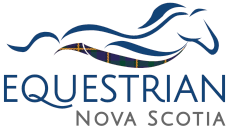Para-Equestrian
Para-Equestrian sport represents an opportunity to enjoy freedom and movement by learning to ride a horse, competing alongside peers, and progressing to high-level competitions, such as the Paralympic or World Equestrian Games.
Para-Dressage has been a regular fixture at the Paralympics since 1996. With the idea of creating opportunities for all people with impairments to compete and achieve their goals in equestrian sport, athletes are classified according to the level of their impairment. In 2006, Para-equestrian sport joined the ranks of the other seven disciplines regulated by the FEI, with national and international competitions for para-dressage and para-driving for individuals.
New Resource from Equestrian Canada: The Power of Para-Dressage: From Therapy to Podium
Para-Equestrian Competitions
Para-equestrian athletes have the opportunity to experience meaning competition in two formats:
1. Para-Equestrian Video Competitions
The Para-Equestrian Video Competitions allow athletes to experience competition conditions in the comfort of their home stable and on a familiar horse.
To participate, athletes are required to record a competitive performance and submit the video to EC’s online Para-Equestrian Video Competition Portal.
2. Para-Equestrian Competitions
Para-equestrian athletes have the opportunity to compete at both para-specific and able-bodied competitions. All EC sanctioned competition organizers are responsible for ensuring every effort is made to accommodate athletes with physical disabilities and ensure there are no barriers to participation.
Pre-Competition Requirements
In order to compete in EC sanctioned competitions, para-equestrian athletes are required to complete and submit the Para-Equestrian Medical Form. This form will assist in the athlete's classification grade and list all approved adaptive aids to be used by the athlete for competition.
Athletes are assessed by accredited Classifiers and given a Grade based on their functional abilities in areas such as muscle power, joint range and coordination.
Classification Grades
Para-equestrian athletes are classified as per the Canadian Paralympic Committee:
• Grade Ia: Riders are mainly wheelchair users with impairment of all four limbs who may be able to walk with an unsteady gait, but trunk and balance are severely impaired.
• Grade Ib: Riders are mainly wheelchair users with poor trunk balance and/or impairment of function in all four limbs, or no trunk balance and good upper limb function, or moderate trunk balance with severe impairment of all four limbs
•Grade II: Most riders are wheelchair users or have little locomotive ability with some limb function. Others have severe unilateral impairment.
• Grade III: Often riders are able to walk without support. They may have minimal use of their limbs or loss of sight.
• Grade IV: Riders usually have an impairment in one or two limbs or have a visual impairment.
Acceptable Adaptive Aids
Adaptive (compensating) aids can be used by athletes to compensate for physical or sensory limitations resulting from their impairment, thereby enabling them to ride or drive a horse safely. A full list of acceptable adaptable aids can be found in the link below. It is very important for athletes to adhere to all rules pertaining to the use of Adaptable Aids in competition.
Para-Equestrian Resources
Para-Equestrian Video Competition Portal
Permitted Compensating (Adaptive) Aids
Para Dressage Video Competition Series
Para-Equestrian Medical Information Form
EC Classification Policy & Procedures
Classification FAQ
EC Rules, Section M
Acceptable Adaptable Aids List
For more information on Para-Equestrian visit, contact [email protected] or Equestrian Canada
For information about Para-Sport in Nova Scotia, contact Sport Nova Scotia

